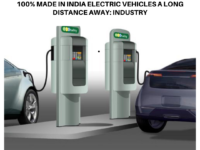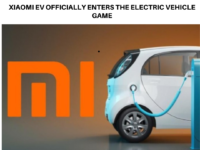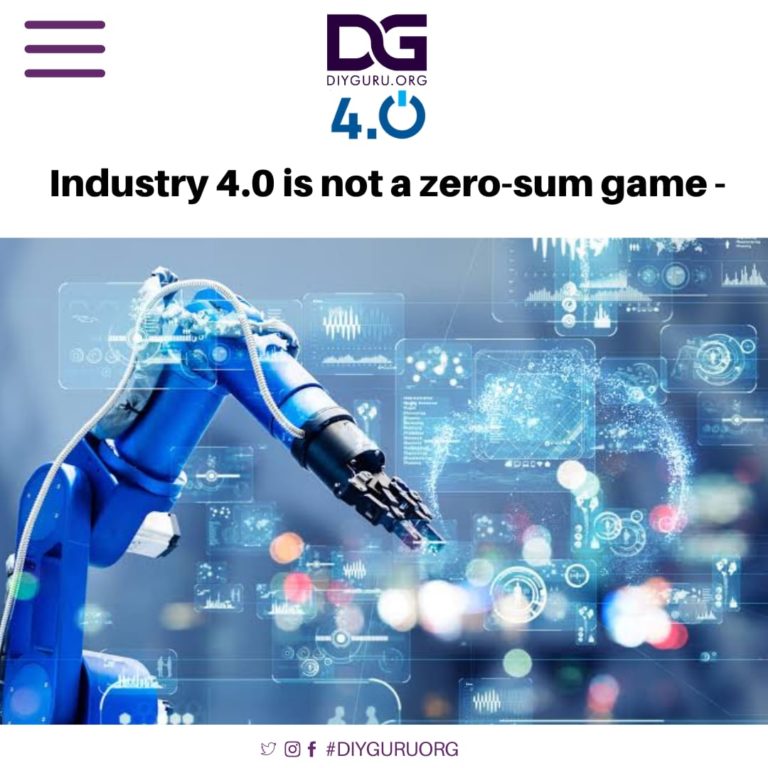It is now understood that the Fourth Industrial Revolution (4IR) or Industry 4.0, characterised by the seamless integration of physical and digital technologies, is not just a process, but a new ecosystem in which businesses, people, and governments will interact more closely and through means which are more agile and flexible. When it comes to the impact and challenges of 4IR, there is almost an established view that with the advent of 4IR, millions will lose their existing jobs.
The Mckinsey Global Institute, in a December 2017 report, has claimed that under various scenarios, 10-800 million jobs will be lost by 2030. This is a problematic conjecture. Here’s why.
Firstly, there is a need to understand the distinction between work and jobs. Fewer jobs do not necessarily mean less work. In fact, on the contrary, there are reasons to believe that 4IR will create more work for people. The advanced technology will enable an erstwhile unit to produce more with the same amount of labor. So, if proportionate demand is generated for more output, there will effectively be no loss in jobs. These are called scale effects which are often ignored in the 4IR discourses.
To complement the scale effects argument, there is something called the diversification effect also. While technology may displace certain erstwhile man-handled jobs, it may create new jobs which were non-existent earlier. Take the case of food delivery by some OTT intermediaries which have penetrated well into Tier-2 cities now. This segment of online food delivery at doorstep, which was not heard of 10 years ago, has not only not displaced any jobs but created new ones on a mass scale. This ‘job-creation aspect of Industry 4.0 is often overlooked.
Policy angle
If the above submissions are convincing enough, does it imply government does not need to intervene at all? On the contrary, the government’s intervention ought to be more focused, comprehensive, and targeted. Equipping the populace with the relevant skill-set is certainly the need of the hour. However, the question of policy design is crucial. In what way, training and skill formation can be imparted is an important issue.
With higher skills, occupational flexibility and coping mechanisms can be enhanced and job seekers will be able to adjust to the changing environment efficiently. In short, the government needs to chart out a clear roadmap of who needs to be trained, with what skills, and by when.
The Singapore model in response to 4IR is worth emulating with necessary customizations. The Singapore Government is using the Smart Industry Readiness Index (SIRI), created by the Singapore Economic Development Board (EDB). SIRI covers the three core elements of Industry 4.0: Process, Technology, and Organisation. The government of India could provide incentives (monetary/non-monetary) to the industrial bodies/associations that adopt the latest technology based on rankings in some sort of India-specific index. The overall response to 4IR need not be an ad-hoc scheme or program. It is a question of transforming the ecosystem, which would need more than just monetary incentives or nudges. A dedicated secretariat to deal with end-to-end processes is required. Also, a complete rethink of the education system is needed. Grassroots level education has to be such that people can exit at various points depending upon their interest and still be work-ready.
The efficacy of the entrepreneurship programmed must be reinstated. The middle class educated youth will have to be trained and provided with market information so that they come up with new ideas for the production of high-value products. Innovation of domestic technology is a must, which not only reduces the cost of the new technology but also makes it appropriate for the economy.
The low price of the technology will make it affordable for a large number of potential manufacturers. This will also form another aspect of the scale effect: even if labor per unit of output declines, the new units and enhanced activities will compensate for the loss.
The pandemic has proven that businesses with virtual presence and mechanized systems are thriving, while others had to shut shop. Amazon is a case in point. Its profits, according to reports, have gone up 200 percent since the pandemic. So, companies should see the pandemic as the inflexion point for their businesses, an opportunity to embrace change and be part of it.
The scope and time frame matter while assessing the impact of 4IR. In a micro setting, displacement of jobs might appear more probable in the shorter run. However, in the longer run, when the outcomes are aggregated at the macro level, the overall impact might look more positive.
So, when drones start delivering food or we start riding in driverless cabs, there is no need to panic and worry about mass displacement because incorporating the scale and diversification effects might lead to a new scenario altogether. The underlying idea is to embrace the technology and not make exaggerated claims about labor displacement, after all, 4IR is not a zero-sum game.
Join our list
Subscribe to our mailing list and get interesting stuff and updates to your email inbox.

















